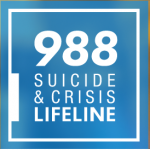I’m fortunate to be able to combine three of my interests today: mental health, HIV and incarceration. Specifically, I’m doing a training for people with HIV who have recently (or not so recently) spent time behind bars. I’m here trying to help them see how they can transform their lived experience into effective advocacy for others. The mental health angle isn’t being covered by us as explicitly as the HIV and treatment activism, but it underlies everything we’re doing: experts estimate that at least 75 percent of people who move through the criminal justice system have a psychological or substance use disorder--often both.
I have to say that I grew up with the same kind of stereotypical view of prisons and prisoners as most people, then I started doing HIV education work in prisons. The first time I ever went to San Quentin State Prison near San Francisco was an intimidating experience. Just getting past the gate guard near the parking lot was a major hassle. The warden’s office hadn’t cleared all of the printed information we were bringing in, despite the fact that it was nothing more than simple fact sheets geared toward helping HIV-positive inmates take care of their health. For someone on the outside, who is trying to work with inmates, it’s one of the first “control” issues you encounter. You never know until the moment you show up whether their going to let you, or your materials, into the prison.
Our next stop was the guard on the inside of the prison. Behind him was a giant sign that looked like it had been printed back in the 1950s. You had to agree to the conditions on the sign before they’d let you in. Front and center was a policy telling you that the guards won’t negotiate if you are taken hostage by the inmates. Basically, if something goes wrong, you’re out of luck. Then you go through two gates. The first one has metal bars about 3 inches thick. Once that clangs behind you, they open the second metal doors. And there you find yourself in the yard, with all of the lower security inmates. If you hold all of the fears and prejudices that I held back then, and suddenly find yourself surround by prison inmates--and no visible guards--it’s a recipe for momentary panic. Television programs like “Oz” don’t help.
There are plenty of people who commit a serious crime, sometimes violent crimes. I’m not such a soft-hearted liberal that I think all prisons should be shut down. I’ve also seen, however, that many people who end up behind bars start out with psychological, behavioral and substance abuse problems that might never have led them to prison if they’d been treated effectively and early enough in their lives.
There are a number of innovative programs that have gotten started over the last two decades that try to keep people from going to prison in the first place, and to help them stay out of prison after they get released. Most of these programs try to address the psychological and social needs that most people within the criminal justice system have. Unfortunately, the recession has laid many of these programs to waste.
Our legislators are having to make wrenching decisions about what programs to maintain, and which to cut at the state and local level. Some of the programs on the chopping block include health care and housing programs for children and seniors. None of these are easy choices and predictably, every program has its supporters.
One thing that I hope people will keep in mind as they learn about these budget crises, and make decisions about what advocate for with their lawmakers is the human and financial cost of not treating mental illness and substance abuse adequately. It costs at least $35,000 per year to keep someone behind bars, and often far, far less to keep them from going there in the first place, or going back once they’ve been released. Ultimately, I hope that we can move from seeing criminal justice policies as conservative or liberal, either soft or tough on crime.
Prisons, and crime, will never be completely eliminated. Law enforcement is a necessity and police officers do a brave and often thankless job. Nevertheless, I hope that we, as a society can evolve to a place where prisons aren’t the answer to our major social problems. The price, on a human and financial level, is far too high.
Here are some moving pictures, stories and stats about mental illness and the corrections system. The photograph above is taken from this website, by Jenn Ackerman.
Is it a Crime to be Mentally Ill?







Comments
Comments